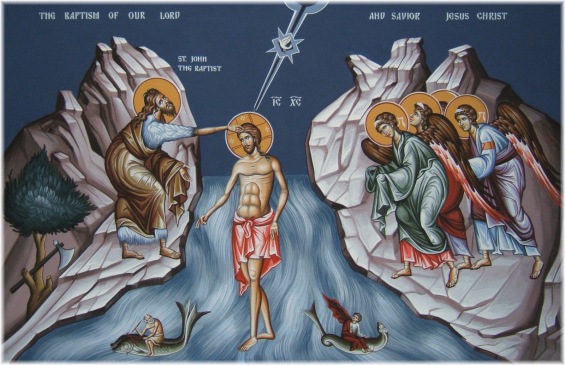This is the fifth in a series of six, to see the complete article go here.
Catechesis
There is something else that I would ask from artists and patrons. Don’t make the symbolism of your art obscure. Liturgical art is supposed to clarify, not mystify. If someone ever wrote an article on the hidden meaning of my art (while being flattered that it should merit such interest) I would also be dismayed. I don’t want meanings to be hidden. I want them to be apparent. So artists, I say to you give as much information as you can on the painting to instruct people as to why it is there. This goes against the grain for many artsy creative types. In my experience they don’t like giving explanations on the meaning of their works, preferring to keep it hidden behind a shroud of mystery and ambiguity in order to maintain an aura of intellectual aloofness. I say in this context, we want clarity and transparency. If necessary, add script to the image in the spoken language of those who will see it; and supply an explanation to the patron. For example, write scripture quotes, or at least, references and titles not just of the image as a whole, but also of its constituent parts. Take just one small example – this wonderful painting of the Baptism of Christ which is appropriate for a baptistry:
There could be perhaps, for the modern Roman Catholic congregation even more script I suggest. The axe and the tree are there to reflect the words of John the Baptist “And now also the ax is laid to the root of the trees: therefore every tree which brings not forth good fruit is hewn down, and cast into the fire.” (Matt 3:10). Perhaps the biblical reference, at least, could be placed next to the symbol. Also the personifications of the River Jordan and the Red Sea are there to connect this moment to the parting of the Red Sea and the parting of Jordan when Joshua (an alternative translation of the name Jesus) entered the Promised Land. These events are the bookends of the flight from Egypt and so are connected to each other and to this event, which is the fulfillment of that journey. The names Red Sea and River Jordan could be written next to them; as well, perhaps as a reference to Psalm 113:1-7:
1 When Israel came out of Egypt, and the sons of Jacob heard no more a strange language,
2 the Lord took Juda for his sanctuary, Israel for his own dominion.
3 The seas fled at the sight they witnessed, backward flowed the stream of Jordan;
4 up leapt, like rams, the startled mountains, up leapt the hills, like yearling sheep.
5 What ailed you, seas, that you fled in terror, Jordan’s stream, what drove thee back?
6 Why did you leap up like rams, you mountains, leap up, you hills, like yearling sheep?
7 Let earth thrill at its Master’s presence; it is he that comes, the God of Jacob,
8 who turned the rock into pools of water, the flint-stone into a springing well.
Then people are more likely to understand that the earth thrills because by his Baptism, Christ has sacramentalized, so to speak, the spring waters that eminate from the rock, which is the Church, and by which our baptism will purify as we die spiritually with Christ, to be spiritually resurrected, in Christ, in Confirmation.
If you look at details of the Ghent altarpiece, above, for example, you will find many painted excerpts from scripture. I suggest that today’s Catholic needs more help than his 15th century counterpart…I know I do! So today we should see more writing on our pictures, not less.
As a result potentially, every member of a parish church would become a catechist and an evangelist who could give the neophyte or visitor a tour of the church through which, by referring to and explaining the images, he would be explaining the essential elements of the Faith.
Continued tomorrow…

